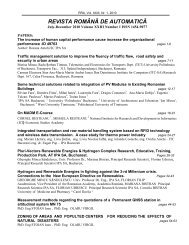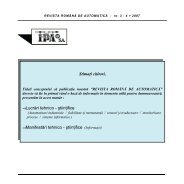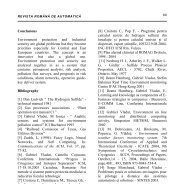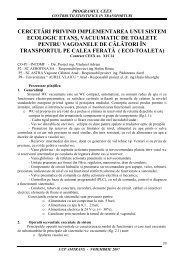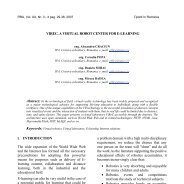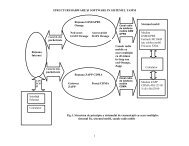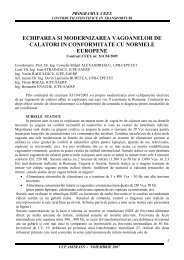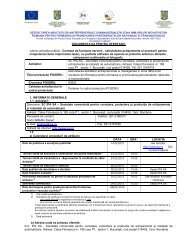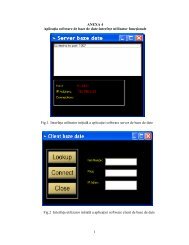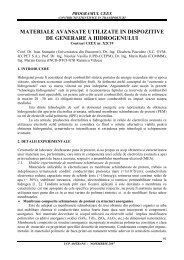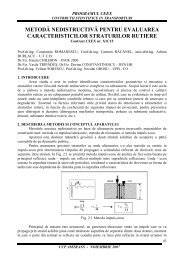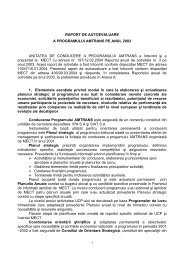REVISTA ROMÃNÄ DE AUTOMATICÄ - IPA SA
REVISTA ROMÃNÄ DE AUTOMATICÄ - IPA SA
REVISTA ROMÃNÄ DE AUTOMATICÄ - IPA SA
You also want an ePaper? Increase the reach of your titles
YUMPU automatically turns print PDFs into web optimized ePapers that Google loves.
<strong>REVISTA</strong> ROMÂNĂ <strong>DE</strong> AUTOMATICĂ<br />
43<br />
3.2. The SMARTBUS-AVL system<br />
Figure 3 The travel card issuing application.<br />
The info kiosk application<br />
Figure 4 The mobile validation application.<br />
The driver console – the “Ticketing” module<br />
Figure 5 GPRS communications in the ticketing<br />
system<br />
The AVL system is implemented in order to<br />
monitor and administrate the vehicle fleet,<br />
and to maintain an operative link with<br />
vehicles in the traffic.<br />
The following hardware infrastructure was<br />
implemented:<br />
1. a server cabled to the Internet having<br />
a forward IP, to be used by the AVL<br />
server application;<br />
2. a central server which hosts the<br />
database SQL SMARTBUS,<br />
connected to the server network with<br />
forward IP;<br />
3. PC workstations and a laptop which<br />
emulates the on-board computers,<br />
having dynamic IP (assigned through<br />
DHCP by Orange mobile network<br />
operator) and the network connections<br />
made through GPRS modems;<br />
4. GPRS modems Telit EZ-10 GPS,<br />
each one connected on a PC/laptop<br />
serial port, which allows both the<br />
determination of the geographic<br />
position through GPS system and also<br />
data mobile connections.<br />
The AVL and communication component<br />
aboard the vehicle<br />
A software module was implemented with the<br />
role to automaticaly determine the geographic<br />
position of the vehicle through the satellites<br />
of the Global Localisation System - GPS, and<br />
also with the role of a GSM-GPRS mobile<br />
data communication for a real time link<br />
between the on-route buses and the central<br />
dispatcher.<br />
The transmitted information types are:<br />
vehicle localization messages sent to the<br />
dispatcher, respectively bidirectional text<br />
messages (the driver can announce to the<br />
dispatcher, for example, unexpected traffic<br />
situations or tehnical issues, but can also be<br />
notified by the dispatcher).



